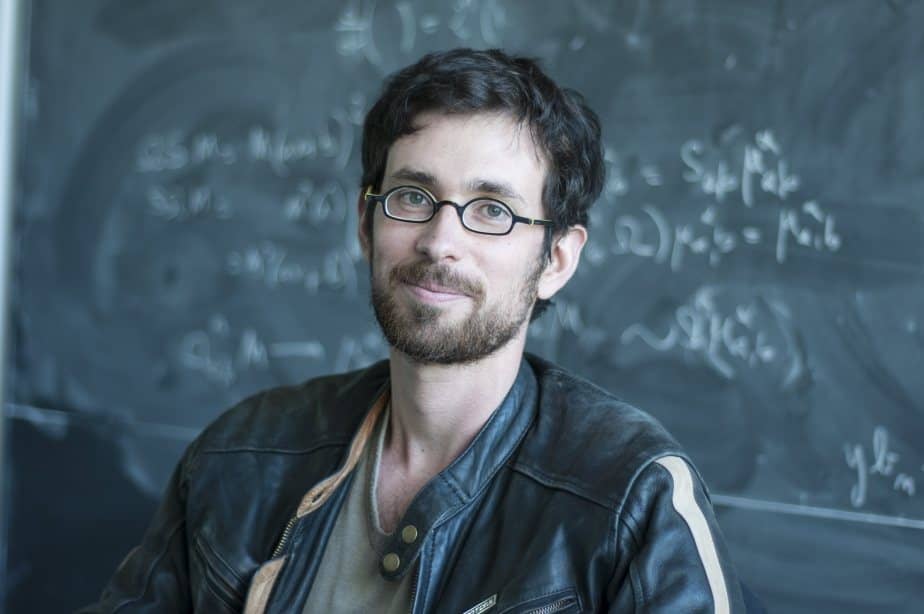How nature keeps predator numbers in check
Perimeter physicist Matteo Smerlak helps uncover a new predator-prey power law that shapes biomass scaling across ecosystems.
Take a self-guided tour from quantum to cosmos!
Perimeter physicist Matteo Smerlak helps uncover a new predator-prey power law that shapes biomass scaling across ecosystems.

When it comes to predator and prey, the math can seem simple: one plus one makes, after a bit of munching, one.
But in reality, the science of ecological systems is brutally complex.
That helps explain how Matteo Smerlak, a postdoctoral fellow at Perimeter, became part of a collaboration that combined empirical data and mathematical modelling to reveal an unexpectedly simple relationship between the hunters and the hunted.
Using tools he usually applies to fundamental physics problems, Smerlak helped show that, when there is a great rise in the number of prey animals in an ecosystem, the number of predators increases too, but not at nearly as rapid a rate.
The resulting paper, published this month in the journal Science, explains that the ratio between predator and prey is consistent and formulaic, and is governed by a mathematical pattern called a power law.
“It’s a general relationship that applies for mammals in the savannah, but also algae and plankton,” Smerlak said. “It’s this really broad pattern that has potential to unify many systems in the living world.”
Lead author Ian Hatton, a biologist at McGill University, was working on the predator-prey research for his PhD when he met Smerlak at the Santa Fe Institute’s 2013 Complex Systems Summer School, which brings together scientists from different fields to work on gnarly problems.
Hatton was analyzing more than 1,000 studies of animals across 2,260 mammal, invertebrate, plant, and plankton communities around the world. He had strong intuitions that the data he was analyzing required a major update to predatory-prey theory, but, not being trained mathematically, he wasn’t sure how to go about it.
That’s where Smerlak’s theoretical skills came in. With Hatton, he wrote down and analyzed new equations for the interaction between predators and their prey — equations accounting for the data instead of clashing with them, as previous equations did.
“Ecology is often concerned with very large scales where data collection is very difficult,” Hatton explained over email.
“For our study, we wished to make comparisons across different ecosystems, such as how plankton change across different lakes in Europe and North America, or how carnivores and herbivores change across parks in East and Southern Africa. This required enormous amounts of data from old archives that had never been put together before.”
Working with other researchers, Hatton discovered a power law that determines the ratio between mass of predators in an ecosystem and the mass of prey in an ecosystem.
Hatton was surprised by the universality of the result: “Nearly every piece of data that we came across fell neatly into line with the others, despite having been collected by different researchers at different times, places, circumstances, etc.”
More than that, the same power law applies to the growth of prey populations alone: should all predators suddenly disappear, the prey population will grow, but increasingly slowly. Smerlak’s and Hatton’s equations explain just how the two patterns — predator-prey ratios and prey production — are related.
The pattern is also remarkably similar to the growth rate of individual animals, the authors note, suggesting this ratio might hint at a consistent process across levels of organization in living systems, from cells to animal populations.
This isn’t the first time Smerlak has worked outside his usual realm of theoretical physics. Led by curiosity more than intent, the postdoc’s collaborations so far span macro-economics (looking at the robustness properties of banking networks and wealth inequalities), biology (probing the statistical structure of Darwinian evolution), and now ecology.
“It’s not that I have a grand strategy of exploring everything. Once something’s interesting, I make it part of my research,” Smerlak said.
“It helps me avoid feeling like I’m in a corner of science that is dark and specialized. Scientifically and intellectually, I feel more complete. And more creative, too.”
For biologist Hatton, collaborating with a physicist was a perfect fit, and delivered rewards beyond data-crunching.
“Physicists have a quantitative background that biologists rarely get exposed to,” he says. “Physicists often seem to make simple things more complicated, but sometimes they can make complex things really elegant and really simple.”
And there is plenty of work to do, yet. The results of this Science paper are big, Smerlak says, but they lack an underlying explanation of what drives the production of prey animals in the first place.
“What’s not explained is the reason why prey populations should grow increasingly slowly, why they should follow a ‘law of diminishing returns’. That’s totally unknown,” he says.
“Ian had convinced me that there’s a general, simple, abstract mechanism that produces this pattern. I would very much like to help find it.”
FURTHER EXPLORATION
Early computers were room-sized mechanical brains complete with wheels, shafts, and cranks. Then the playful and ingenious Claude Shannon came along.
In his latest book, UK Astronomer Royal Sir Martin Rees explores how humanity’s rapid technological advances are threatening – and may ultimately vouchsafe – our survival as a species. He sat down with Inside the Perimeter to discuss why he believes science provides our clearest glimpse into the future.
Somewhat less prestigious than the Nobel Prize, but much more hilarious, the Ig Nobel Prize annually lauds research worth commemorating for its weirdness.